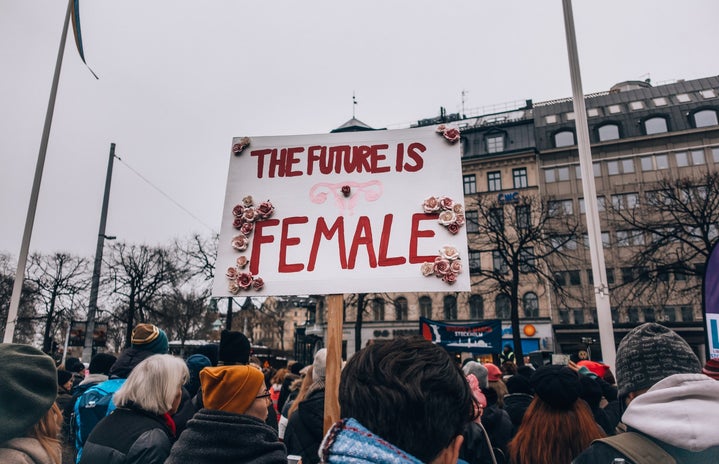You may have heard the term femicide before between discussions related to the #MeToo movement, by activists in various protests and campaigns against gender-based violence, or maybe this past summer after the devastating murder of Pinar Gültekin in Turkey sparked a resurgence of the #ChallengeAccepted trend that went viral worldwide on social media.
But even though Pinar’s story brought to light the deeply rooted cultural and political issue of violence against women in Turkey, the repurposed #challengeaccepted trend intended to raise awareness on these issues on social platforms such as Instagram was eventually taken out of context. As more and more users, including celebrities like Eva Longoria and Khloe Kardashian, caught onto the trend without necessarily knowing why it was trending again, it disrupted the efforts to raise awareness on femicide.
Even though social media users and the media were quick to circle back and make sure the original intentions of the trend’s revival were known, femicide is still very prevalent yet continues to be overlooked. At a time where gender-based violence remains an ongoing issue, and COVID-19 restrictions and lockdown have caused an uptick in domestic violence, it’s important to continue raising awareness and taking the necessary steps to put an end to gender-based violence and femicide.

What is femicide?
Femicide, the most extreme form of gender-based violence, is broadly defined as the intentional killing of women and girls because they are females. Femicide is not an isolated or occasional case of violence, but rather encompasses the globally persisting killing and maiming of women as displays of gender-based inequality and discrimination. This inequality and discrimination, along with other driving factors, are often accepted and perpetuated culturally, socially and politically.
Femicide is also not just the “female version” of male homicide. Femicide is most often committed by men, and perpetrators can be partners, ex-partners, and even family members.
Femicide can also be understood by breaking down the different types of femicide. While femicide can take place in many forms, the World Health Organization lists the four most widely recognized forms of femicide as intimate femicide, “honor”-related, dowry-related and non-intimate femicide.
Intimate femicide refers to femicide committed by a current or previous boyfriend or husband and makes up over 35% of the murders of women committed globally, according to a collaborative study between the WHO and the London School of Hygiene and Tropical Medicine in 2012. As the term suggests, non-intimate femicide does not involve a partner but is still very prevalent as it often involves sexual violence and plays into a systematic killing of women, according to the WHO.
“Honor” killings and dowry-related femicide involve the murder of a girl or woman by a relative or other family member. “Honor” killings are often the response to a girl’s or woman’s sexual behavior being deemed transgressive and adulterous, and are committed as a means of preserving a family’s honor. Dowry-related femicide is the result of dowry-related disputes, such as insufficient dowry, which leads to the murder of a new bride by her in-laws. Both forms of femicide are highly linked to longstanding cultural ideals and practices deeply entrenched in certain societies and even reflected at the political level, making the repercussions far-reaching and accomplishing change incredibly challenging.
Where does femicide occur?
Gender-based violence and femicide occur globally. However, certain countries and regions see higher rates of femicide and different forms of femicide can be disproportionately higher depending on location.
“Honor” killings largely occur in certain parts of the Middle East and South Asia. A majority of Turkey’s femicide is reported to be honor-based, and in 2019 alone, over 400 women were murdered by either relatives or partners. Dowry-related killings are predominant in India, and based on a Global Citizen report from 2018, it was reported that 20 women die daily due to dowry-related deaths there.
According to the WHO, non-intimate femicide rates remain alarmingly high in Latin America and also disproportionately affects women who are sex workers, a profession that is already highly stigmatized. The Pan American Health Organization reports that 11% of women in the Americas have experienced either physical or sexual violence by a non-partner and 30% by a partner.
How can we put an end to femicide?
Following Pinar Gültekin’s murder this past July, thousands of women gathered in protest across the country, particularly in support of one of Turkey’s feminist platforms We Will Stop Femicide. Similar campaigns in South Africa kicked off in 2019, after the death of Uyinene Mrwetyana.
But there are changes that must be made at the political level, through enacting and repealing certain laws and legislation. Trainings and the resources to facilitate conversations and help victims and survivors are required. While this is a challenging feat, there are still ways we can productively advocate for change.
Other key steps include continuing to research and collect information on gender-based violence, in order to better understand femicide and the factors that influence its prevalence.
Encouraging empathy, respect and support towards survivors is essential. As with most issues, advocacy, raising awareness and education are always key steps in activism and enforcing change. Organizations such Global Citizen offer the tools to take action on certain issues, from the environment to women’s rights, to help raise awareness and demand action.
Ending femicide is a part of the larger ongoing effort to end violence against women and gender inequality and won’t be done overnight, but by making sure it does not continue to be overlooked and continuing to advocate for women’s rights, safety, and equality, change can be made.


